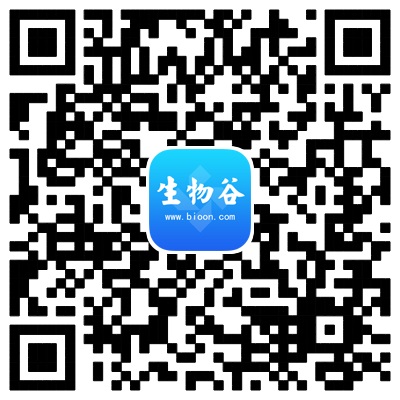关键词:舌头,味觉

据livescience网站8月29日报道,将舌头味觉分成甜、酸、咸和苦4个区域是错误的。现在舌头能品尝出五种基本味道已经得到确认,舌头的任何部分都具备几乎一样的品尝出这些味道的能力。
正如本月《自然》杂志所报道的,科学们已经确认舌头上的一种蛋白质能探测出酸味。这是一种相当重要的蛋白质,因为它使我们和其它哺乳动物能区别出腐烂或者未成熟食物。此项研究发现获得了高度赞誉,因为这项对基因工程老鼠为期数年的不懈研究使科学家在鉴别味觉机理上取得了一个小小的突破。
这听起来可能会让人觉得过于简单,但是这项研究却相当重要。因为此项研究将有助于我们对比味觉更为复杂的视觉、听觉及其它感觉的了解。
只是在最近几年我们才确认出味觉受体。味觉研究取得的首次突破是在1974年,它纠正了一个多世纪以来无人能改变的错误舌头“地图”。你可能也知道这个错误的舌头“地图”:能品尝出“甜”味的味蕾位于舌尖;“咸”味味蕾位于舌头前部的一侧;“酸”味味蕾在“咸”味味蕾的后面;“苦”味味蕾在舌头的后半部分。据说葡萄酒杯就可以测试出这样的舌头味觉部位安排。
在家里就可以很容易检验出这种舌头地图是错误的。放盐在你的舌尖上,你将品尝出咸味。因为这样或者那样的原因,科学家们从来就不愿意为争论这种麻烦真相而自寻烦恼。
这幅舌头地图误导了包括我在内的许多小学生,它使我们无法在科学课上获得正确的经验。我也没有能坚持自己的想法,我能用我的舌头后部分品尝出甜味。事实上舌头除了甜、酸、咸和苦外还可以品尝出其它味道。大多数科学家都同意20世纪初一位名叫池田的科学家所发现的第五种味道,即鲜味的存在。此项研究发现在二十世纪的绝大多时间一直被西方所忽视。这种味道就是谷氨酸盐,它广泛存在于日本食物中,特别是昆布(一种类似于海菜的海藻)、熏肉和味精中。池田教授分离出了这种物质并获得专利。现在人们正就第六种油腻味觉受体的存在与否展开争论。
舌头地图研究可以追溯到1901年一名名叫D.P.哈尼格的德国科学家所发表的论文。尽管并不熟悉日本烹饪,但是哈尼格还是着手测试舌头对四种已知味道的相关敏感部位。根据自愿者的主观奇想,他得出了甜味敏感区域在舌尖等等一系列结论。1942年,一位著名的哈佛大学心理历史学家爱德温?波林同样对日本烹饪毫不熟悉,他利用哈尼格的原始数据计算出了不同敏感水平的真实数量。这些数量仅仅对应相关的灵敏度,但是一些科学家却利用这些数据绘制了一幅舌头味觉地图,而其它科学家却又假定这些低灵敏度区域是不存在灵敏性的。现代舌头地图就这样诞生了。
1974年,一名名叫维吉尼亚?库林斯的科学家重新论证了哈尼格的研究,并赞同哈尼格的大部分观点:舌头周围的各个部分对四种基本味觉的灵敏度存在差异性。(这使葡萄酒杯的制造者们欣喜若狂)。但是这种差异性却相当小,基本上可以忽略。(葡萄酒杯制造者忽略这部分)。库林斯发现舌头周围任何有味觉受体的部分都能品尝出所有味道,比如口腔上层后半部分的软上腭,甚至会厌软骨和防止食物进入气管的口盖都能品尝出所有味道。
后来的研究发现味蕾似乎包含了针对每种味道的50至100个受体。尽管差异的程度仍然面临争议,但是以味觉的种类方式来描绘舌头地图却显得过于简单化。为什么现在教科书还继续使用舌头旧地图真是一个令人费解的迷。
至于神话中所描述的,舌头是人体中最强壮的肌肉,以“力量”来定义似乎并不符合事实。嚼肌或者颚肌是最强壮的肌肉主要得力于它的机械优势,肌肉依附在颚上构成了一种杠杆。如果进行纯粹的力量测试,四头肌和臀大肌则是人体中横纹肌纤维密度最高的地区。如果你以持续无疲劳为标准测量肌肉力量,那么心肌将是最强壮的肌肉。从另一方面来讲,舌头是会很快疲劳的,至少有些人是这样。
英文原文:
The Tongue Map: Tasteless Myth Debunked
The notion that the tongue is mapped into four areas-sweet, sour, salty and bitter-is wrong. There are five basic tastes identified so far, and the entire tongue can sense all of these tastes more or less equally.
As reported in the journal Nature this month, scientists have identified a protein that detects sour taste on the tongue. This is a rather important protein, for it enables us and other mammals to recognize spoiled or unripe food. The finding has been hailed as a minor breakthrough in identifying taste mechanisms, involving years of research with genetically engineered mice.
This may sound straightforward but, remarkably, more is known about vision and hearing, far more complicated senses, than taste.
Only in recent years have taste receptors been identified. One of the first breakthroughs in taste research came in 1974 with the realization that the tongue map was essentially a century-old misunderstanding that no one challenged.
You might know the map: The taste buds for "sweet" are on the tip of the tongue; the "salt" taste buds are on either side of the front of the tongue; "sour" taste buds are behind this; and "bitter" taste buds are way in the back. Wineglasses are said to cater to this arrangement.
The tongue map is easy enough to prove wrong at home. Place salt on the tip of your tongue. You'll taste salt. For reasons unknown, scientists never bothered to dispute this inconvenient truth.
The map has frustrated many a grade-schooler, including me, who couldn't get the experiment right in science class. I failed for insisting I could taste sugar in the back of my tongue.
In fact, there's more to taste than sweet, sour, salty and bitter. Most scientists agree that there's a fifth distinct taste, called umami, identified by a Japanese scientist named Kikunae Ikeda in the early 1900s (and ignored by the West for most of the twentieth century). This is the taste of glutamate. It is common in Japanese foods, particularly kombu, a type of sea vegetable similar to kelp, and in bacon and monosodium glutamate (MSG), which Ikeda isolated and patented. There's considerable debate about the existence of a sixth taste receptor for fat, too.
The tongue map dates back to research by a German scientist named D.P. Hanig, published in 1901. Not familiar with Japanese cuisine, Hanig set out to measure the relative sensitivity on the tongue for the four known basic tastes. Based on the subjective whims of his volunteers, he concluded that sensitivity to the four tastes varied around the tongue, with sweet sensations peaking in the tip, etc. That's all.
In 1942, Edwin Boring, a noted psychology historian at Harvard University, also apparently unfamiliar with Japanese cuisine, took Hanig's raw data and calculated real numbers for the levels of sensitivity. These numbers merely denoted relative sensitivities, but they were plotted on a graph in such a way that other scientists assumed areas of lower sensitivity were areas of no sensitivity. The modern tongue-map was born.
In 1974, a scientist named Virginia Collings re-examined Hanig's work and agreed with his main point: There were variations in sensitivity to the four basic tastes around the tongue. (Wineglass makers rejoiced.) But the variations were small and insignificant. (Wineglass makers ignored this part.) Collings found that all tastes can be detected anywhere there are taste receptors-around the tongue, on the soft palate at back roof of the mouth, and even in the epiglottis, the flap that blocks food from the windpipe.
Later research has revealed that taste bud seems to contain 50 to 100 receptors for each taste. The degree of variation is still debated, but the kindest way to describe the tongue map is an oversimplification. Why textbooks continue to print the tongue map is the real mystery now.
As for the myth that the tongue is the strongest muscle in the body, this doesn't seem to be true by any definition of "strength." The masseter, or jaw muscle, is the strongest due its mechanical advantage, in which the muscles attach to the jaw to form a lever. The quadriceps and gluteus maximus have the highest concentration of striated muscle fibers, a pure measure of strength. The heart is the strongest muscle if you measure strength as continuous activity without fatigue.
The tongue, on the other hand, wears out quickly-at least with some people.
(责任编辑:anita888)








